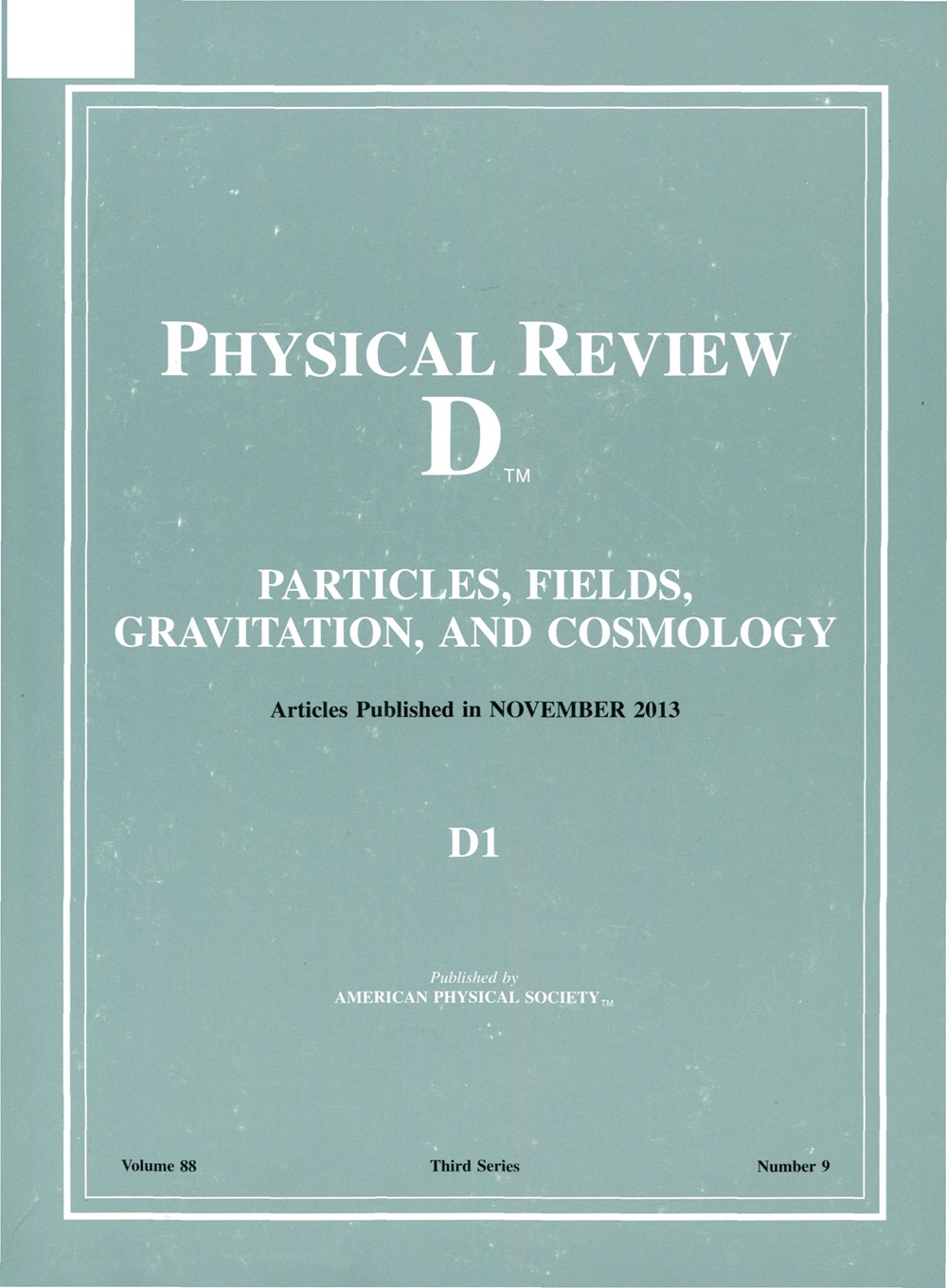Spin-independent interactions of Dirac fermionic dark matter in the composite Higgs models
IF 5.3
2区 物理与天体物理
Q1 Physics and Astronomy
引用次数: 0
Abstract
According to recent measurements, the dark matter magnetic dipole moment is strongly constrained. In the composite Higgs models the magnetic dipole moment of the Dirac dark matter fermion and its mass can be suppressed by the approximate U(1) symmetry. We consider the复合希格斯模型中狄拉克费米子暗物质的自旋独立相互作用
根据最近的测量,暗物质的磁偶极矩受到强烈的约束。在复合希格斯模型中,狄拉克暗物质费米子及其质量的磁偶极矩可以被近似的U(1)对称性所抑制。我们考虑了具有U(1)对称违反算子的E6启发复合希格斯模型(E6CHM),它产生了暗物质的质量和与希格斯玻色子的耦合常数。探讨了与自旋无关的暗物质-核子散射截面与E6CHM参数的关系。我们认为,参数空间的某些区域仍然不受当前所有约束的影响,并且可能导致壮观的LHC特征。2024年由美国物理学会出版
本文章由计算机程序翻译,如有差异,请以英文原文为准。
求助全文
约1分钟内获得全文
求助全文
来源期刊

Physical Review D
物理-天文与天体物理
CiteScore
9.20
自引率
36.00%
发文量
0
审稿时长
2 months
期刊介绍:
Physical Review D (PRD) is a leading journal in elementary particle physics, field theory, gravitation, and cosmology and is one of the top-cited journals in high-energy physics.
PRD covers experimental and theoretical results in all aspects of particle physics, field theory, gravitation and cosmology, including:
Particle physics experiments,
Electroweak interactions,
Strong interactions,
Lattice field theories, lattice QCD,
Beyond the standard model physics,
Phenomenological aspects of field theory, general methods,
Gravity, cosmology, cosmic rays,
Astrophysics and astroparticle physics,
General relativity,
Formal aspects of field theory, field theory in curved space,
String theory, quantum gravity, gauge/gravity duality.
 求助内容:
求助内容: 应助结果提醒方式:
应助结果提醒方式:


